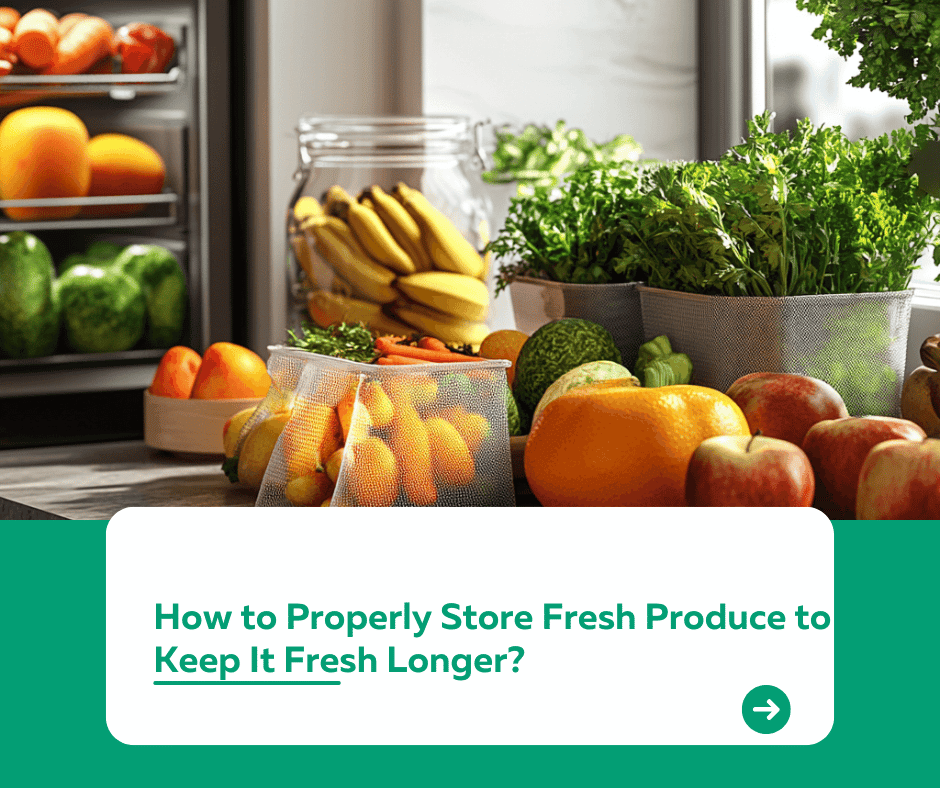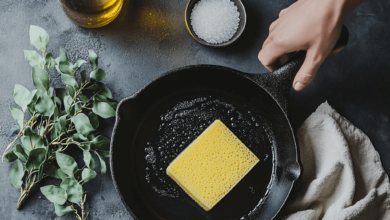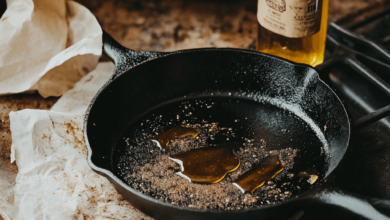How to Properly Store Fresh Produce to Keep It Fresh Longer?

Introduction
Do you often find yourself throwing away fruits and vegetables because they spoil too quickly? How can you properly store fresh produce to keep it fresh longer? In this guide, we’ll explore effective tips and tricks to help you extend the shelf life of your fruits and vegetables, reduce waste, and enjoy fresher, healthier meals.
1. Understand Your Produce
Different types of produce have unique storage needs:
- Refrigerated Produce: Leafy greens, berries, and cruciferous vegetables like broccoli.
- Countertop Produce: Bananas, tomatoes, and avocados, which ripen better at room temperature.
- Cool, Dark Places: Potatoes, onions, and garlic last longer when stored in a pantry.
2. Use Proper Storage Containers
Invest in storage containers that help maintain freshness:
- Airtight Containers: Ideal for cut fruits and vegetables.
- Perforated Bags: Allow airflow for produce like lettuce and herbs.
- Glass Jars: Great for storing prepped produce while retaining moisture.
3. Store Leafy Greens Correctly
Leafy greens are prone to wilting quickly. To keep them fresh:
- Wash and dry thoroughly using a salad spinner.
- Wrap them in a damp paper towel and store them in a resealable bag or container in the fridge.
- Avoid storing greens with fruits like apples or bananas, which emit ethylene gas and cause faster spoilage.
4. Manage Ethylene Gas Emitters
Some fruits and vegetables release ethylene gas, which speeds up ripening.
- High Ethylene Emitters: Bananas, apples, and tomatoes.
- Keep Them Separate: Store these away from ethylene-sensitive produce like leafy greens and berries.
5. Don’t Wash Until You’re Ready to Use
Washing produce before storage can lead to faster spoilage due to excess moisture.
- Wash items like berries, grapes, and cherries only when you’re ready to eat them.
- If you prefer to pre-wash, dry thoroughly to avoid mold and rot.
6. Freeze Excess Produce
If you can’t use produce before it spoils, freezing is a great option:
- Chop fruits and vegetables into small portions.
- Blanch vegetables like broccoli and carrots before freezing to retain color and texture.
- Store in freezer-safe bags or containers for easy access later.
7. Use the Right Refrigerator Settings
Adjust your fridge settings to optimize freshness:
- Keep the fridge temperature at 32–40°F (0–4°C).
- Use the crisper drawers for fruits and vegetables to maintain appropriate humidity levels.
- Separate fruits and vegetables in different drawers to prevent cross-contamination.
Conclusion
Properly storing fresh produce can significantly extend its shelf life, reduce waste, and help you enjoy healthier meals. By understanding your produce, using the right containers, and managing ethylene gas, you can keep your fruits and vegetables fresh for longer. For more kitchen tips and tricks, visit our Kuestion.com.




